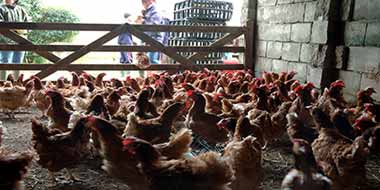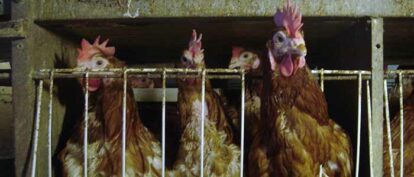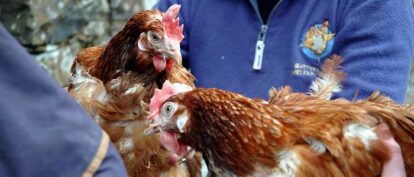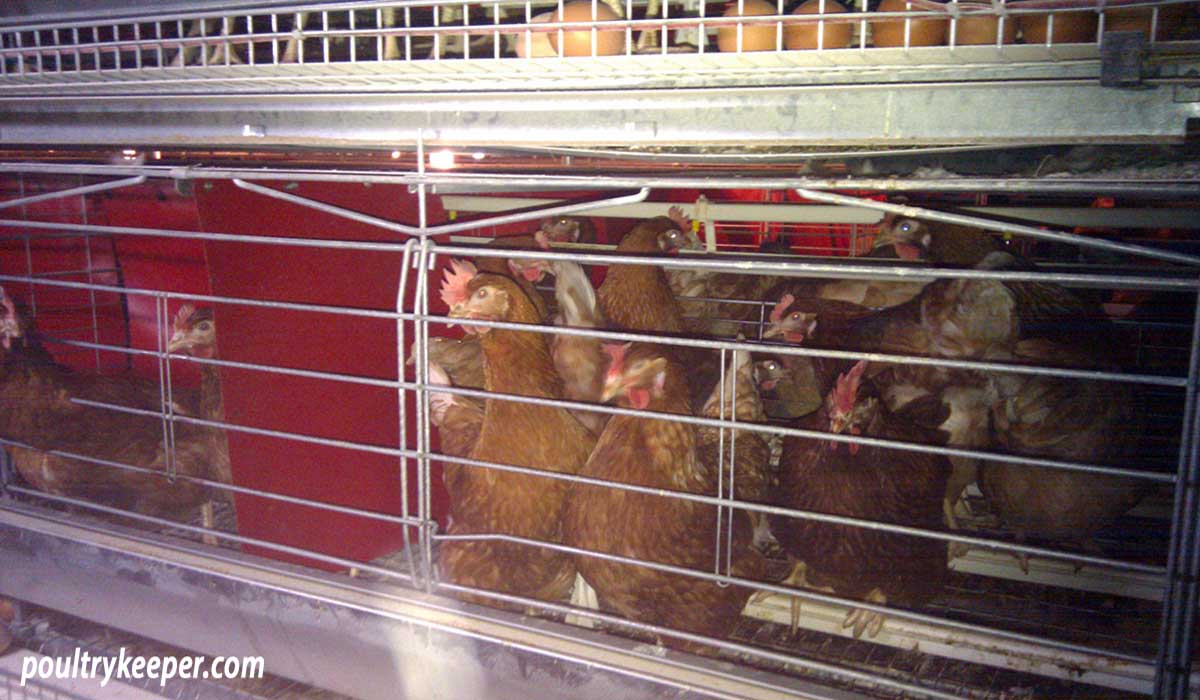
In January 2012, the barren battery hen cage ban came into force in Europe, finally seeing the end of the tiny, cramped cages where each hen had less room than an A4 size piece of paper. In this article, Jo takes a look at the new enriched colony cages.
Whilst the 2012 barren cage ban is an important step forward in hen welfare, it has led to a common misconception that there are now no hens in cages in the UK. Unfortunately, this is not true. Barren cages were replaced by enriched, and more recently, colony cages. Caged eggs are still very much available on shop shelves. What does this all mean, and how do you know what sort of eggs you are buying?
What are enriched cages?
The original replacement for barren cages, giving each hen about 20% more room. Imagine that A4 piece of paper and add a postcard. The cages have nest boxes, litter, perch space and some scratching materials and house up to 10 hens.
What are colony cages?
These larger cages house 60-80 hens in large aircraft hangar-style buildings full of these cages. They have the same facilities as the enriched cages and the same amount of room per hen. In each cage of 80 hens, there are 4 nest boxes.
What is good about the new enriched colony cages?
They have taken most of the hens across Europe out of tiny ‘barren cages’, which considerably restricted their natural behaviours and movement. Still, the most important benefit of the new larger cages is that the egg industry is starting to acknowledge that the barren cages were an inhumane way of treating commercial hens and, as such, an important step forward in the advancement of hen welfare.
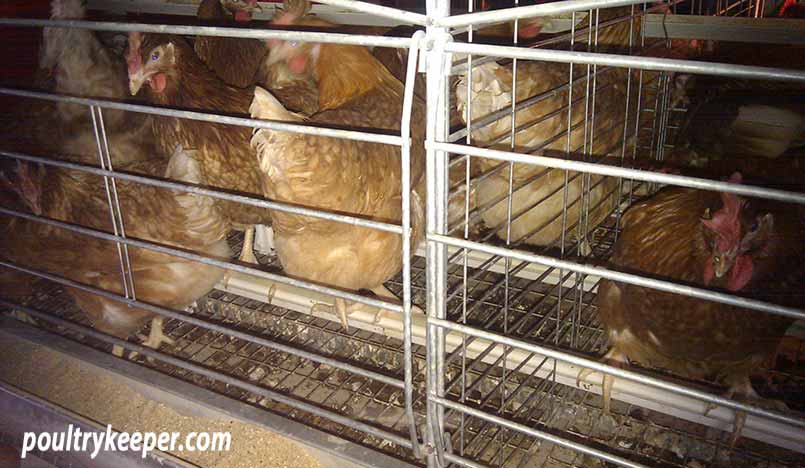
The new facilities in enriched colony cages allow the hens to exhibit some basic natural behaviours such as perching, scratching and nesting.
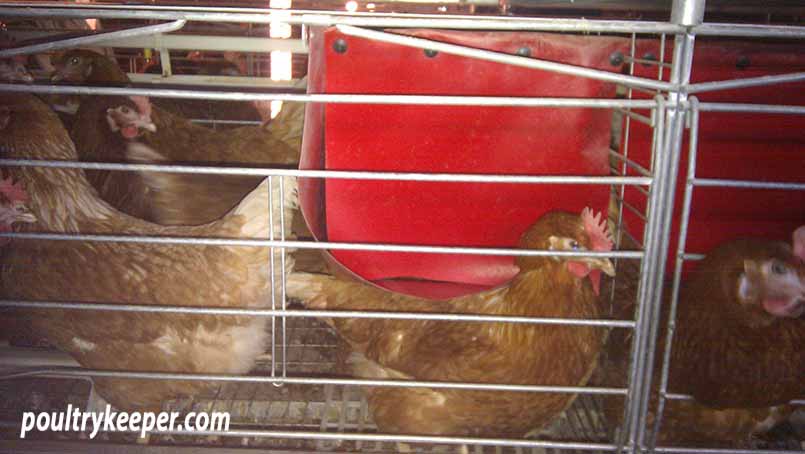
What similarities are there to the old barren cages?
Unfortunately, all too many. Hens will never see natural daylight; they still stand on wire floors; they are still routinely debeaked; they are still sent to slaughter at about 18 months.
Commercial hens are bred to produce high numbers of eggs (an egg a day) for a short period of time. This depletes their body of calcium and leads to brittle bones.
Movement is still restricted in enriched colony cages – remember there is only 20% more room – and feather pecking still occurs. Hens coming out of the new cages can sometimes look similar to those coming out of the old barren ones although generally speaking, they are better.
What problems are there with the new cages?
There are minimal facilities in the new enriched colony cages. 4 nest boxes for up to 80 hens is a tiny amount and will cause fighting; dominant hens will ensure hens lower in the pecking order can not access this facility. And submissive hens will also still not be able to escape bullying.
The scratching area is often astroturf, so the hen cannot properly scratch or forage – another basic natural behaviour. Nor can she fly, jump, preen properly, dustbathe, sunbathe or even spread her wings.
Several tiers of crowded cages, two cages deep, make checking for unwell hens difficult and dead hens may lie unnoticed for days.
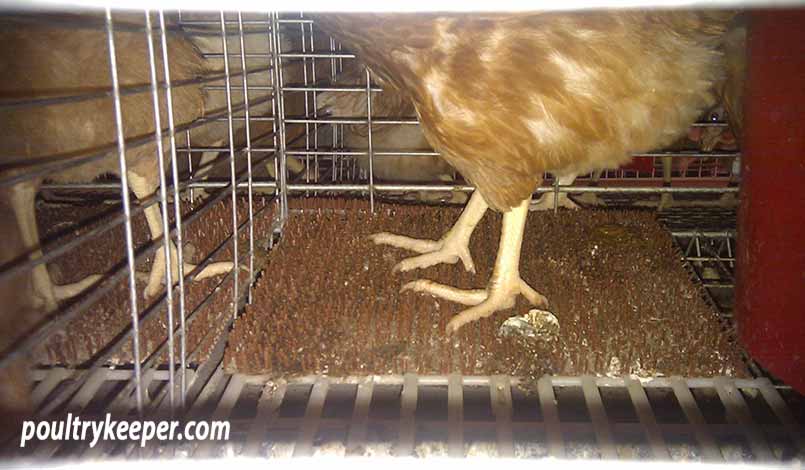
Whilst UK farmers are all compliant with the Barren Cage Ban and are using enriched colony cages, some EU countries (most notably Italy, Poland, Greece and Spain) still defy the law and have the old-style barren cages. The UK government did not support its own farmers and thus failed to ban the import of these now illegal eggs.
Whilst it is easy to identify barren caged shelled eggs (due to unique markings seen under ultraviolet), it is impossible to trace the liquid egg source, which is widely used in commercial products. Eggs crop up in no end of products, from the obvious quiches and pies to less obvious products such as wine. The only way to be sure your eggs are not from illegal barren cages is to make sure it says Free Range Eggs on the label.
My views on the new cages
No creature belongs in a cage, be it a hen, human or tiger. I have rehomed hens from enriched/colony cages, and there is minimal difference in their physical and emotional state to that of their barren caged sisters.
The egg industry can dress the word caged up as much as it likes – colony sounds such a lovely word – and create a marketing smokescreen for consumers. The hard fact is the egg industry is responsible for the misery of millions of hens, as their only concern is profit.
The supermarkets’ reason for stocking caged eggs is consumer demand. But on my visits to the supermarkets (and this is in a poor area of Cornwall, during the current recession), the Free Range eggs had sold out, and it was the caged eggs that had not sold.
Free Range eggs sell from as little as 17p per egg, and caged is about 15p per egg. 2p difference to us, but think of the difference to the hens.
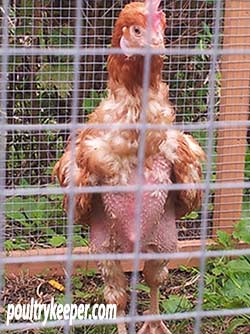
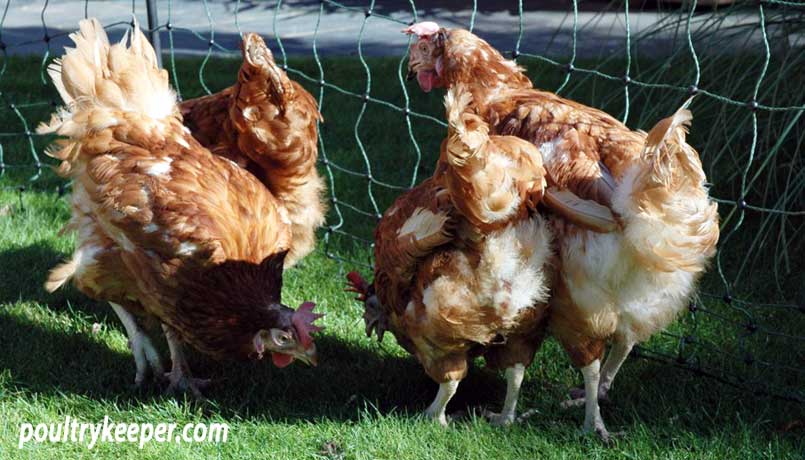
What can we do?
As campaigns such as the 2007 Chicken Out Campaign have shown, the British public care deeply about animal welfare; what they lack are truthful and accurate facts so they can make an informed decision.
The only way to make the egg industry and the supermarkets listen to us is not to buy caged eggs. Or colony eggs. Or whatever the new marketing word for caged is. Always buy Free Range eggs. And always check the ingredients list of any manufactured products for egg. If it doesn’t say ‘Free Range’, it most certainly won’t be. Then tell companies and supermarkets why you are not buying caged eggs.
Free Range eggs currently make up about 50% of the market; it is up to us to see it becomes 100%.
Do you have experience rescuing hens from Enriched / Colony systems or an opinion on this type of farming? We’d love to hear from you below.


